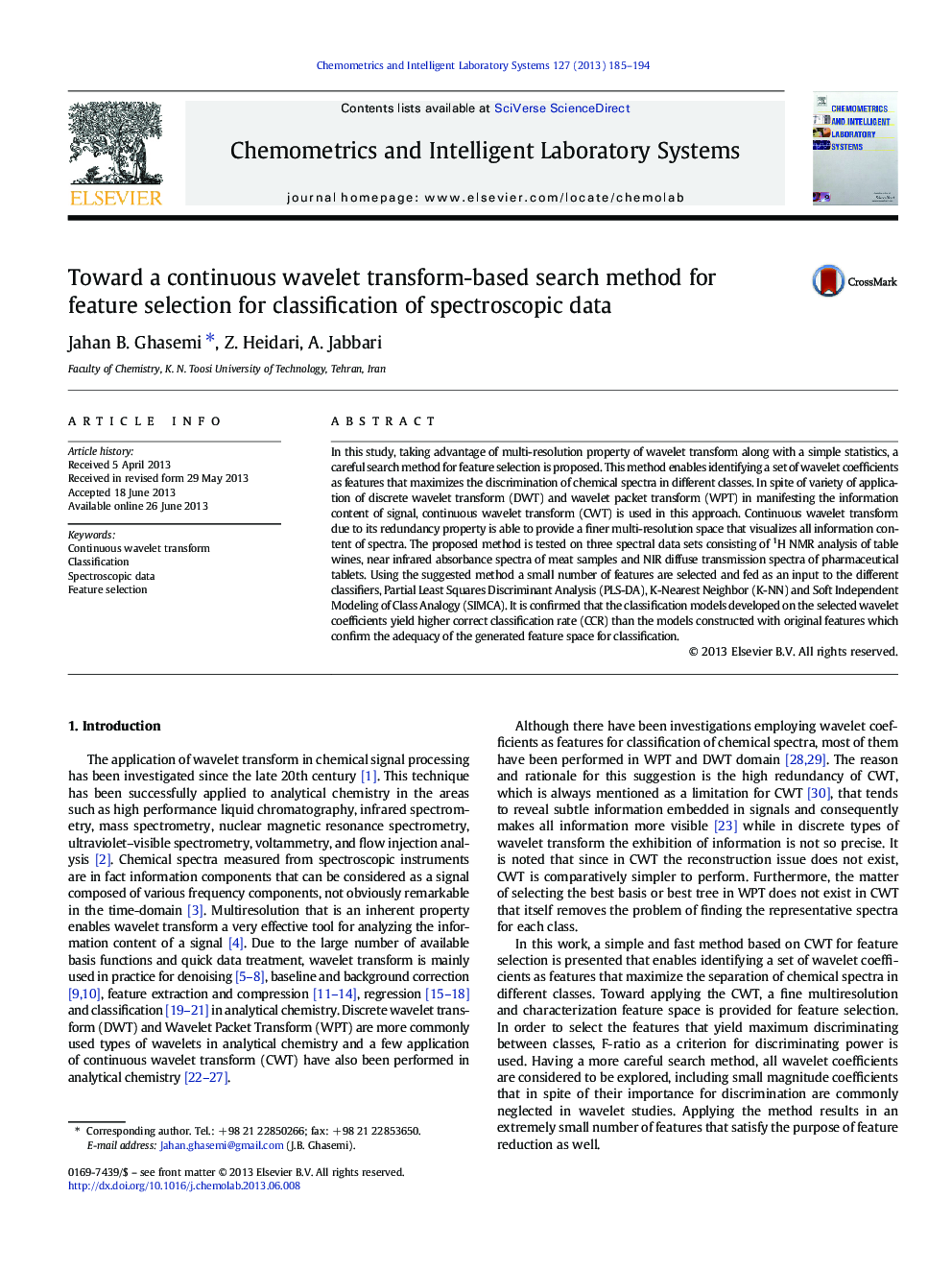| Article ID | Journal | Published Year | Pages | File Type |
|---|---|---|---|---|
| 1181074 | Chemometrics and Intelligent Laboratory Systems | 2013 | 10 Pages |
•A fast and simple method is proposed for classification of spectroscopic data.•CWT is suggested as a useful tool to select the best features.•CWT can reveal subtle information embedded in signals.•The proposed method is applied on three spectral data sets.•The method results in an extremely number of features that satisfies feature reduction.
In this study, taking advantage of multi-resolution property of wavelet transform along with a simple statistics, a careful search method for feature selection is proposed. This method enables identifying a set of wavelet coefficients as features that maximizes the discrimination of chemical spectra in different classes. In spite of variety of application of discrete wavelet transform (DWT) and wavelet packet transform (WPT) in manifesting the information content of signal, continuous wavelet transform (CWT) is used in this approach. Continuous wavelet transform due to its redundancy property is able to provide a finer multi-resolution space that visualizes all information content of spectra. The proposed method is tested on three spectral data sets consisting of 1H NMR analysis of table wines, near infrared absorbance spectra of meat samples and NIR diffuse transmission spectra of pharmaceutical tablets. Using the suggested method a small number of features are selected and fed as an input to the different classifiers, Partial Least Squares Discriminant Analysis (PLS-DA), K-Nearest Neighbor (K-NN) and Soft Independent Modeling of Class Analogy (SIMCA). It is confirmed that the classification models developed on the selected wavelet coefficients yield higher correct classification rate (CCR) than the models constructed with original features which confirm the adequacy of the generated feature space for classification.
